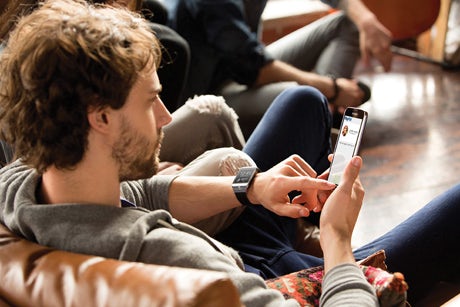Native content accounts for 20% of display ad spend
Marketers spent a fifth (20 per cent) of their digital display budgets on native content in the first half of 2014 as strategies adapt to exploit rising demand for branded content such as video on mobile devices, according to a report.

The growing appetite for content marketing pushed native ad spend to £216m in the first six months of the year, according to the latest Internet Advertising Bureau UK Digital Ad Spend report, conducted by PwC. It is the first time native content has been measured in the bi-annual survey, which tracked spend on paid for sponsorships, advertisement features ad in-feed distribution.
Native content’s growing influence on display ad budgets is also transforming how brands use mobile. Brands are increasingly willing to experiment with how branded content including videos appear in the newsfeeds of users on the move as the likes of Facebook and Google offer deeper insights and more creative mobile ad formats.
Mobile display rose 116 per cent year-on-year to £315.7m, making up nearly a third (31 per cent) of total digital display advertising in the period.
Consumer goods advertisers spent the most on mobile display, accounting for a fifth (23 per cent) followed by entertainment (21 per cent) and technology (12 per cent) brands. Mobile display’s popularity among FMCG brands chimes with the recent moves from Heineken and Mondelez to run more native mobile ad trials as they look to shift from using traditional banner ads to drive direct response to more brand building strategies.
Mobile video content has also fuelled the change in advertising tact. Mobile video spend grew 196 per cent year-on-year to £63.9m in the period, making it the fastest growing ad format in the first half of 2014.
Tim Elkington, chief strategy officer at the IAB, said future marketing opportunities for mobile will stem from the trend of watching videos on connected devices becoming an “increasingly social activity”. “Half of people watching TV, films or video clips online do so with family members and three in ten watch with friend, he adds.
The shift in media consumption helped pushed the industry to triple mobile’s share of the digital ad pie in the first half of 2014, according to the research. Mobile advertising grew 68 per cent from £429.2m to £707.1m, accounting for one fifth of digital spend.
The expansion of the UK mobile advertising market comes despite frustrations from some marketers about its ability to brand build and generate demand. The majority of marketers (52 per cent) are planning to pare back spend on mobile in order to understand how it ties to the rest of the marketing mix.
Elsewhere, social media spend grew 73 per cent to £396m, a notable increase on the 53 per cent jump it recorded in the same period last year, according to the IAB report. Paid for search advertising rose only 11.3 per cent to £1.92b, a sharp decline on the 59 per cent increase it posted in the same period last year.
Total digital spend jumped 16.6 per cent to £3.5bn in the period. It is a slight drop on 17.5 per cent jump registered in the first half of 2013.






